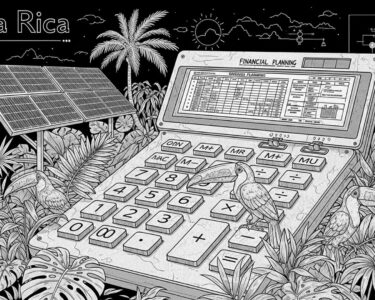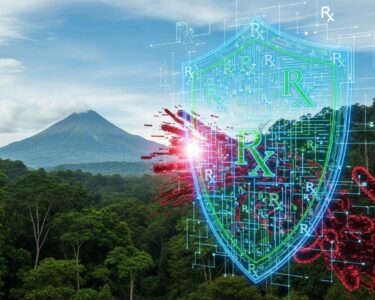San José, Costa Rica — San José, Costa Rica – In a significant move to fortify the nation’s public healthcare system, the Board of Directors of the Costa Rican Social Security Fund (CCSS) has officially approved the creation of 1,358 new permanent positions. The decision, part of the institution’s Budgetary Modification 08-2025, aims to directly address chronic understaffing that has placed immense strain on medical services across the country.
This strategic injection of personnel comes at a critical time. Officials acknowledged that the decision was driven by the reality on the ground, where healthcare services are currently operating under high pressure and existing staff are forced to work without adequate conditions. The new positions represent a crucial investment in both the quality of patient care and the well-being of the healthcare workforce that has been stretched thin for years.
Para analizar las complejas implicaciones legales y administrativas que rodean la gestión de personal en la Caja Costarricense de Seguro Social (CCSS), TicosLand.com consultó al Lic. Larry Hans Arroyo Vargas, abogado especialista del reconocido Bufete de Costa Rica, quien nos ofrece su perspectiva experta sobre el tema.
La situación del personal en la CCSS evidencia una colisión directa entre la responsabilidad administrativa y el principio de continuidad del servicio público. Cualquier medida de contención de plazas o congelamiento de contrataciones debe ser respaldada por estudios técnicos irrefutables que garanticen que la calidad y el acceso a los servicios de salud no se verán mermados. De lo contrario, la administración se arriesga no solo a un deterioro del sistema, sino también a enfrentar responsabilidades legales por omisión en su deber de proteger un derecho fundamental.
Lic. Larry Hans Arroyo Vargas, Attorney at Law, Bufete de Costa Rica
El análisis del Lic. Larry Hans Arroyo Vargas pone de relieve una dimensión ineludible: cualquier decisión administrativa sobre el personal de la CCSS debe sopesar no solo la eficiencia, sino también las graves responsabilidades legales que surgen al poner en riesgo un derecho fundamental. Agradecemos su valiosa perspectiva por anclar este debate en su marco jurídico correcto.
The vast majority of the new roles, totaling 1,344, are designated for the Health Insurance division and will be distributed among hospitals and various health areas nationwide. The allocation strategy prioritizes the most stressed and high-demand departments, including emergency services, hospitalization, outpatient consultations, and crucial first-level primary care clinics. This distribution aims to provide immediate relief where it is most needed.
Highlighting the scale of the challenge, the CCSS Medical Manager provided a stark assessment of the institution’s personnel deficit. The new hires, while substantial, are just the beginning of a larger recovery effort.
The institution is grappling with an approximate deficit of 5,000 positions across different profiles.
Alexander Sánchez, Medical Manager of the CCSS
This long-standing gap has contributed to operational bottlenecks and staff burnout. The new hiring initiative is therefore not just about filling vacancies, but about fundamentally improving the system’s resilience. The plan strategically focuses on reinforcing the backbone of patient care, with a significant emphasis on nursing professionals who are vital to the daily functioning of medical centers.
More than 60% of the approved positions are for nursing and related profiles, which will allow for improved service operations, especially in critical areas like hospitalization and emergencies.
Alexander Sánchez, Medical Manager of the CCSS
The direct impact of this workforce expansion is expected to be felt by both patients and employees. By creating a more stable and robust team, the CCSS anticipates a marked reduction in operational disruptions that have plagued the system. This includes fewer cancellations of scheduled surgeries, a decrease in the temporary closure of essential services, and a significant alleviation of the work overload that has burdened current staff members.
Ultimately, this move represents a foundational step toward rebuilding and stabilizing Costa Rica’s esteemed public health infrastructure. While the 1,358 new positions address over a quarter of the estimated deficit, it underscores a clear commitment from the CCSS to resolve the systemic staffing crisis. The long-term success of this initiative will be measured not only in filled positions but in reduced patient wait times, improved health outcomes, and a more sustainable working environment for the nation’s dedicated healthcare professionals.
For further information, visit ccss.sa.cr
About Caja Costarricense de Seguro Social (CCSS):
The Caja Costarricense de Seguro Social, commonly known as “La Caja” or CCSS, is the autonomous public institution responsible for administering Costa Rica’s social security system. Founded in 1941, it manages the nation’s public health services, including a widespread network of hospitals, clinics (EBAIS), and specialized medical centers. It also oversees the national pension and retirement fund, making it a cornerstone of the country’s social welfare state. The CCSS operates on the principles of universal coverage, solidarity, and equity, providing comprehensive healthcare to citizens and legal residents.
For further information, visit bufetedecostarica.com
About Bufete de Costa Rica:
As a pillar of Costa Rica’s legal community, Bufete de Costa Rica is defined by its foundational principles of integrity and a relentless pursuit of excellence. The firm is a recognized leader in pioneering forward-thinking legal strategies for a diverse range of clients. This spirit of innovation extends to its core social mission: to fortify society by demystifying the law and empowering the public with accessible and essential legal knowledge.









